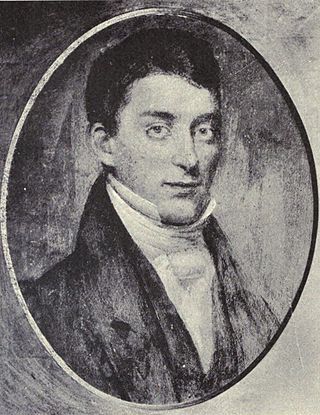
Lahaina is a census-designated place (CDP) in Maui County, Hawaii, United States. On the northwest coast of the island of Maui, it encompasses Lahaina town and the Kaanapali and Kapalua beach resorts. At the 2020 census, Lahaina had a resident population of 12,702. The CDP spans the coast along Hawaii Route 30 from a tunnel at the south end, through Olowalu, and to the CDPs of Kaanapali and Napili-Honokowai to the north.

Kalanikauikaʻalaneo Kai Keōpūolani-Ahu-i-Kekai-Makuahine-a-Kama-Kalani-Kau-i-Kealaneo (1778–1823) was a queen consort of Hawaiʻi and the highest ranking wife of King Kamehameha I.

Samuel Mānaiakalani Kamakau was a Hawaiian historian and scholar. His work appeared in local newspapers and was later compiled into books, becoming an invaluable resource on the Hawaiian people, Hawaiian culture, and Hawaiian language while they were disappearing.

The island of Maui with a relatively central location has given it a pivotal role in the history of the Hawaiian Islands.

David Malo or Davida Malo (1795–1853) was a chiefly counselor, a Hawaiian intellectual, educator, politician and minister. He is remembered by subsequent generations of Hawaiian people and scholars primarily as a Native Hawaiian historian of the Kingdom of Hawaii. In 1852 he was ordained as a minister at Kēōkea, Maui.

Dwight Baldwin was an American Christian missionary and medical doctor on Maui, one of the Hawaiian Islands, during the Kingdom of Hawaii. He was patriarch of a family that founded some of the largest businesses in the islands.

David Belden Lyman was an early American missionary to Hawaii who opened a boarding school for Hawaiians. His wife Sarah Joiner Lyman (1805–1885) taught at the boarding school and kept an important journal. They had several notable descendants.

Lorrin Andrews was an early American missionary to Hawaii and judge. He opened the first post-secondary school for Hawaiians called Lahainaluna Seminary, prepared a Hawaiian dictionary and several works on the literature and antiquities of the Hawaiians. His students published the first newspaper, and were involved in the first case of counterfeiting currency in Hawaii. He later served as a judge and became a member of Hawaii's first Supreme Court.

Sheldon Dibble was a missionary to Hawaii who organized one of the first books on Hawaiian history, and inspired students to write more.

Waiola Church and Cemetery in Lāhainā is the site of a historic mission established in 1823 on the island of Maui in Hawaiʻi. Originally called Waineʻe Church until 1953, the cemetery is the final resting place for early members of the royal family of the Kingdom of Hawaii.

Ulumāheihei Hoapili was a member of the nobility during the formation of the Kingdom of Hawaii. He was a trusted military and political advisor to King Kamehameha I, known as "Kamehameha the Great". Although trusted with one of the last symbolic rites of the Hawaiian religion, he later became a supporter of Christian missionaries.

William Richards was a missionary and politician in the Kingdom of Hawaii.

Jonathan Smith Green was a missionary from New England to the Kingdom of Hawaii.

Kaukuna Kahekili, often called Kehikili or Kehikiri in earlier sources, was a Hawaiian high chief during the early period of the Kingdom of Hawaii.

Lahaina Banyan Court Park is a public park in the town of Lahaina, Hawaii, The 1.94 acres (0.79 ha) park, also known as Lahaina Courthouse Square and commonly called Banyan Tree Park, contains multiple heritage sites. Located at the corner of Front Street and Canal Street, it is part of the Lahaina Historic Districts.

Boaz Mahune was a 19th-century politician and civil servant of the Kingdom of Hawaii. He helped contribute to the writing of the 1840 Constitution of the Kingdom of Hawaii and was the author of its preamble the He Olelo Hoakaka, or the Declaration of Rights of 1839.
Zorobabela Kaʻauwai was an early politician and judge in the Kingdom of Hawaii. Beginning as an assistant to the Hoapili, Governor of Maui, he served many political posts including Assistant Judge of the first Supreme Court of Hawaii, an original member of the Board of Commissioners to Quiet Land Titles, a multiple-term representative in the Hawaiian legislature and circuit judge for Maui. An early convert to Christianity and devout adherent of the Protestant faith, his first name is a Hawaiian form of the Biblical name Zerubbabel.

John Tamatoa Baker, also given as John Timoteo Baker, was a Hawaiian politician, businessman, and rancher who served many political posts in the Kingdom of Hawaii, including Governor of the Island of Hawaii from 1892 to 1893. Baker and his brother became the models for the Kamehameha Statues.

William Hoapili Kaʻauwai was a Hawaiian high chief and politician, and religious deacon of the Kingdom of Hawaii. He served two terms as a member of the House of Representatives of the Legislature of the Kingdom in 1862 and 1870. He became the only Native Hawaiian to be ordained a deacon of the Anglican Church of Hawaii and traveled with its founder Queen Emma to Europe between 1865 and 1866, circumnavigating the globe upon his return eastward via New Zealand.


























